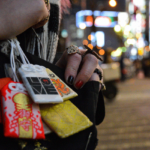Modernising and Marketing Japanese Buddhist Altars
In Practically Religious, Reader and Tanabe (1998) discuss how Japanese religious organisations also function as commercial institutions. Rather than see commerce and religion as necessarily opposed, economics and marketing are understood as part of the ethical and spiritual dimensions of religion. In particular, Reader and Tanabe focus on the innovations of temples and shrines: “Shinto and Buddhist institutions have been able to create new religious responses to contemporary needs, to spot potential areas for new concerns, and to produce benefits, rituals, and amulets that address (and at times encourage) these needs” (232)
This kind of commercial innovation is practiced by Yagiken (http://www.yagiken.co.jp/), a Japanese company selling contemporary Buddhist altars (butsudan). Butsudan serve multiple functions in everyday religious and household practice in Japan, as the place for Buddhist worship and the veneration of deceased ancestors. They are often inherited through families, but today are more frequently found in rural areas than urban centers. Traditional butsudan are extremely large, heavy and ornate, made from stained dark wood and gold-leaf details (see image: http://ja.wikipedia.org/wiki/%E4%BB%8F%E5%A3%87#mediaviewer/File:Japanese_Buddhist_altar_001.jpg).
Yagiken is an innovative company in the industry of household butsudan, who entered the market in 1970s. Their designs depart from the guidelines for butsudan dictated by mainstream Buddhist denominations, instead seeking to cater to modern aesthetic and spiritual trends of urbanite Japanese. In his ethnographic study of Yagiken’s marketing strategies (2008), John Nelson argues that by emphasizing individual style and choice, Yagiken altars reflect scepticism about organised religion in Japan after the Aum Shinrikyo terror attack and 9/11. Yagiken thus seeks to promote ancestor veneration in a more palatable, secularised form. Yagiken produce altars that are smaller and less ornate. They are sleek and stylish, including high-end models crafted in Denmark and Italy. I recommend a brief look at their online catalog (http://www.1-butsudan.com/search/?cat=butsudan)
Contemporary butsudan remain a niche market in Japan, but it is interesting to consider how Yagiken both creates and fulfills a need for modern religious objects than can become stylish additions to one’s home décor.
Reference:
Nelson, J. (2008) Household Altars in Contemporary Japan: Rectifying Buddhist “Ancestor Worship” with Home Décor and Consumer Choice. Japanese Journal of Religious Studies, 35 (2), 305-330
Hannah Gould
Contributed by Hannah Gould on 31/01/2015






